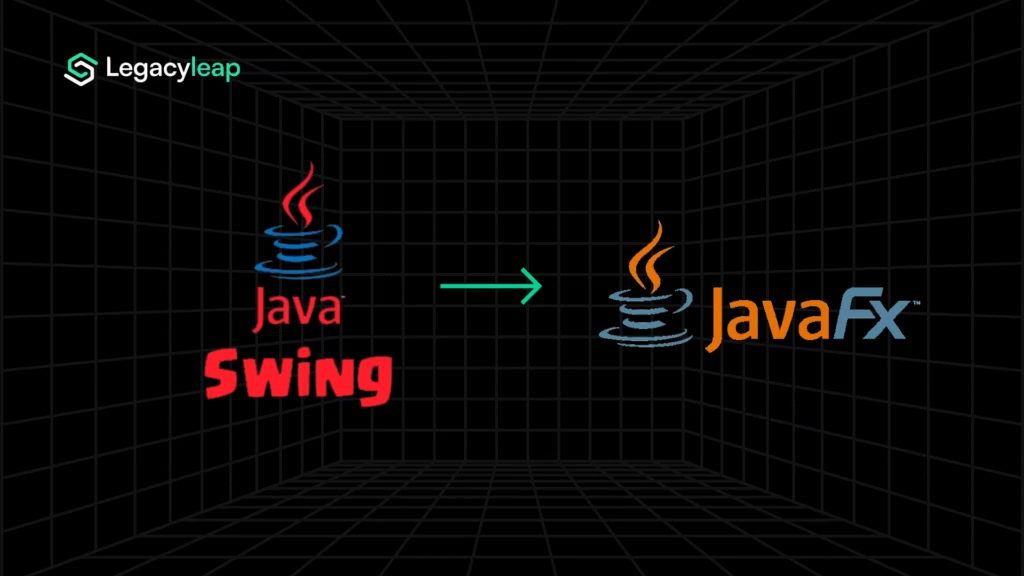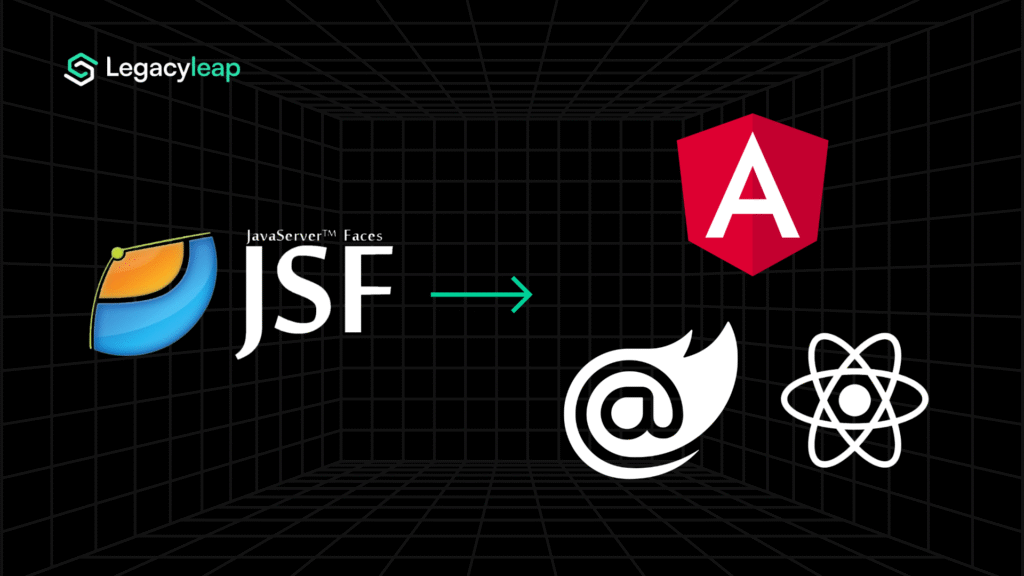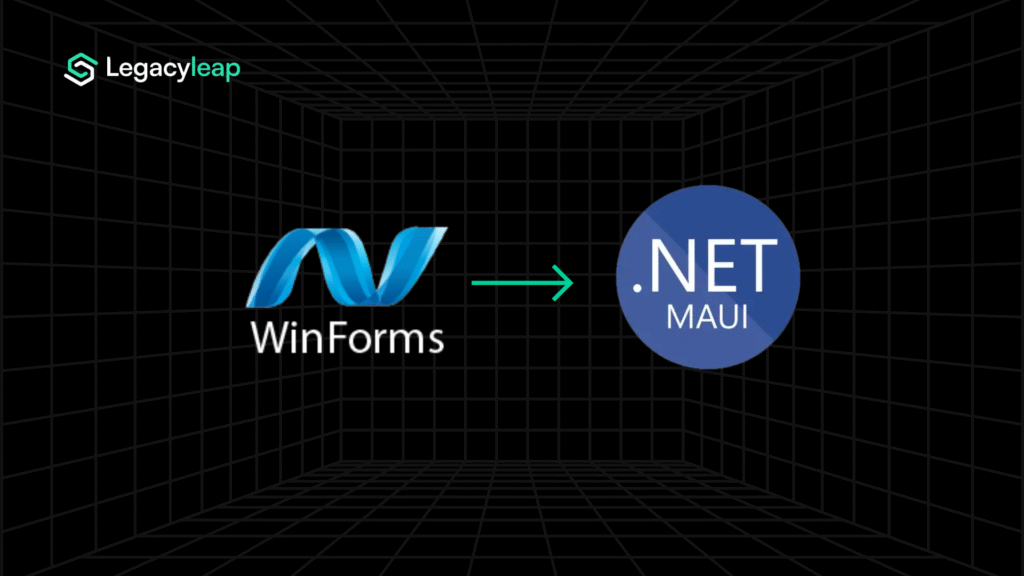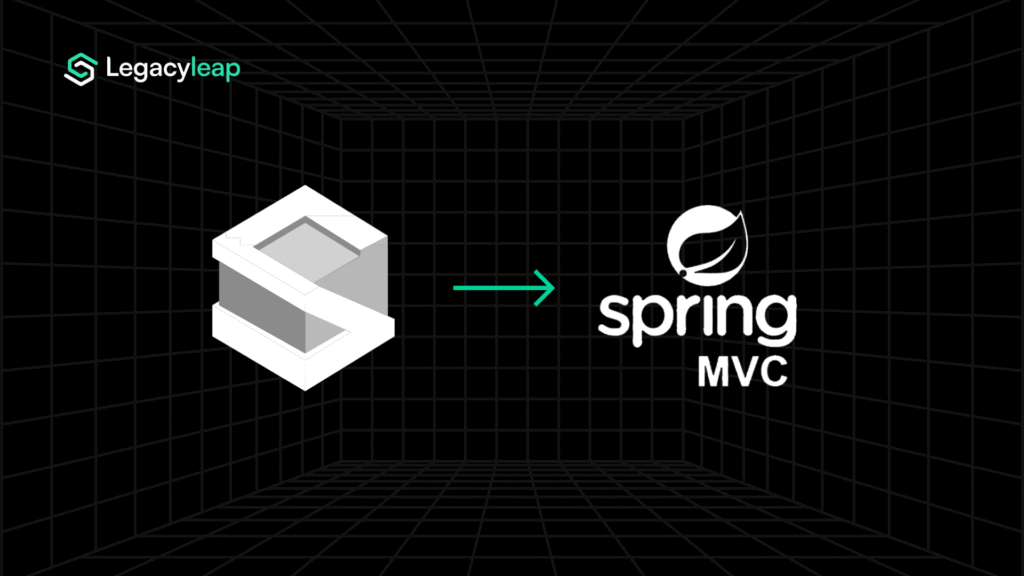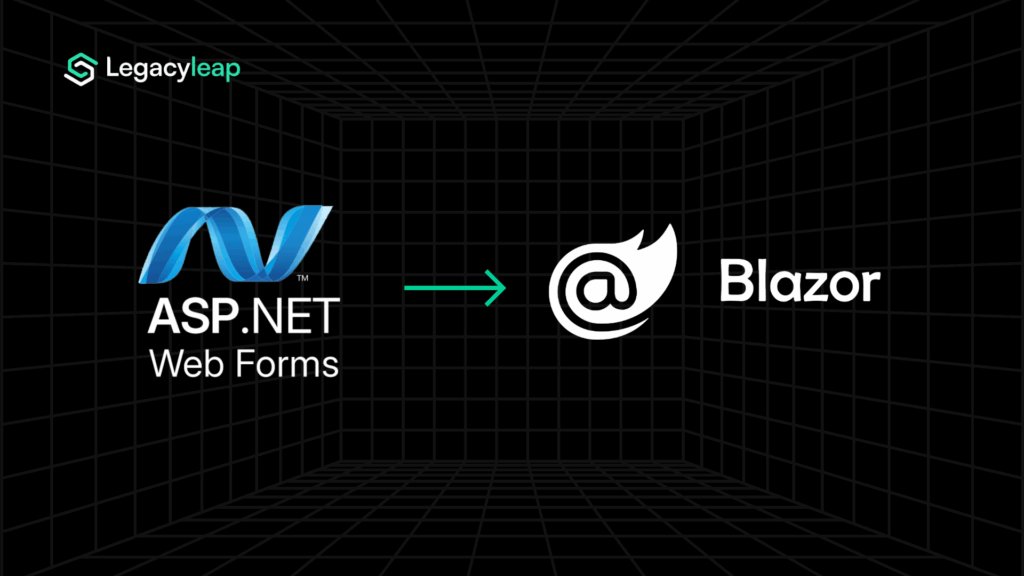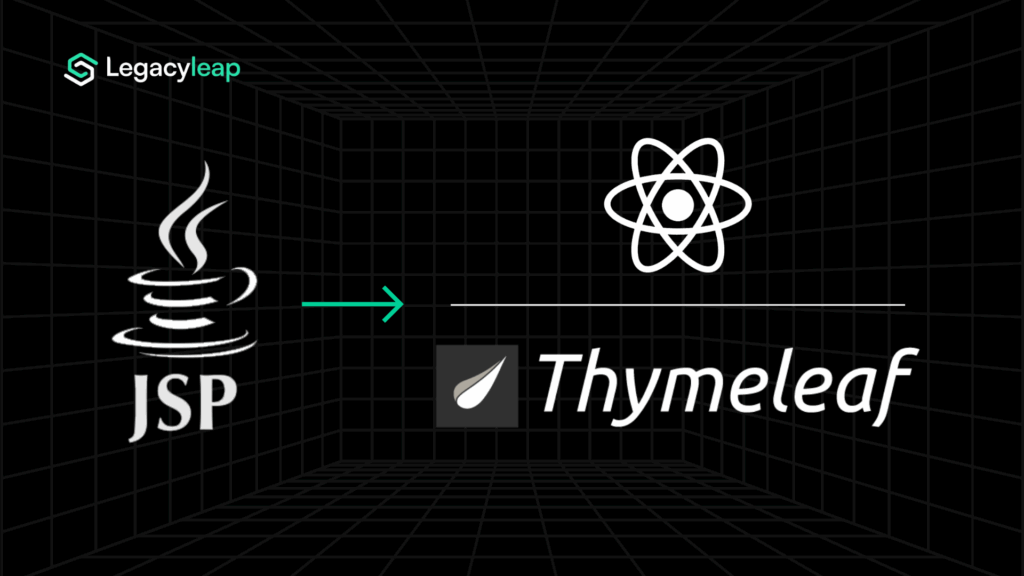Introduction: Why Classic ASP Migration Can’t Wait
Classic ASP has quietly persisted inside many enterprises for decades, but its runway is now ending. The framework is tied to IIS and Windows Server, with no future roadmap, and its scripting engine — VBScript — is being retired. Starting with Windows 11 24H2, VBScript is disabled by default, with Microsoft scheduling full removal after 2027.
For enterprises, the implications are clear:
- Compliance risk: Unsupported runtimes tied to deprecated scripting engines create audit and security exposure.
- Talent scarcity: The developer pool for Classic ASP and VBScript is shrinking rapidly, driving up maintenance costs.
- Operational fragility: Inline business logic, COM/ActiveX dependencies, and undocumented workflows make these systems harder to support with each passing year.
The reality is that Classic ASP still underpins business-critical systems in finance, healthcare, and manufacturing, but every year of delay increases risk. Migration, in this case, is about finding a path that delivers predictability, security, and business continuity.
This blog focuses on that path: the advantages of ASP.NET Core, the challenges that make ASP rewrites complex, and how Gen AI with Legacyleap transforms modernization into a safer, faster, verifiable program.
Why ASP.NET Core Is the Only Path Forward
Migrating from Classic ASP isn’t about chasing the newest framework but securing a foundation enterprises can build on for the next decade. ASP.NET Core delivers that foundation in four critical ways:
| Capability | Classic ASP (Legacy) | ASP.NET Core |
| Platform support | Windows-only, IIS-bound | Windows, Linux, macOS; container + Kubernetes ready |
| Performance & scalability | VBScript interpreted, high overhead | Kestrel server, async I/O, significant throughput gains |
| Security & support | VBScript deprecated, fragile session/auth model | Active development, modern auth (OAuth2, OIDC), predictable roadmap |
| Cloud-native alignment | No DevOps or infra-as-code integration | First-class CI/CD, IaC, cloud-native deployment |
Key benefits for enterprises:
- Cross-platform flexibility → Windows lock-in replaced with Linux + container deployments, improving infra ROI.
- Performance efficiency → Kestrel benchmarks show substantial gains, enabling fewer servers under enterprise load.
- Predictable security posture → Actively patched framework with modern auth, reducing compliance exposure.
- Cloud-native adoption → Native integration with CI/CD pipelines, infrastructure-as-code, and Kubernetes orchestration.
For CIOs and CTOs, moving to ASP.NET Core is a shift to an enterprise-ready platform that reduces risk, cuts costs, and unlocks innovation blocked by legacy stacks.
Also read: A Complete .NET Migration Guide for Modernizing Legacy Microsoft Stacks.
Classic ASP Migration Challenges: What Blocks Progress
Moving from Classic ASP to ASP.NET Core is not a simple upgrade. The technical blockers are well-known, but their real impact is felt at the enterprise level:
- VBScript → C# rewrite required:
- There is no automated converter path. Every Classic ASP page using VBScript must be re-implemented.
- Enterprise risk: High manual effort, longer timelines, and inconsistent code quality.
- There is no automated converter path. Every Classic ASP page using VBScript must be re-implemented.
- COM/ActiveX and ADODB dependencies:
- Legacy objects (Server.CreateObject, Recordsets, COM interop) have no direct equivalents. They must be replaced with .NET libraries (e.g., EF Core, System.Net).
- Enterprise risk: Brittle replacements and hidden lock-in that delay rollout.
- Legacy objects (Server.CreateObject, Recordsets, COM interop) have no direct equivalents. They must be replaced with .NET libraries (e.g., EF Core, System.Net).
- Auth/session incompatibility:
- Classic ASP sessions and cookies don’t interoperate with ASP.NET Core by default.
- Enterprise risk: Risky coexistence during phased cutovers; user downtime if not carefully managed.
- Classic ASP sessions and cookies don’t interoperate with ASP.NET Core by default.
- Inline business logic and missing documentation:
- Global.asa scripts, inline VBScript, and absent design records make code comprehension slow.
- Enterprise risk: Scope uncertainty, leading to budget overruns and unplanned regression issues.
- Global.asa scripts, inline VBScript, and absent design records make code comprehension slow.
These blockers explain why traditional rewrites are slow and error-prone. Without new methods, enterprises face multi-year projects with little certainty of timelines, cost, or parity.
| Challenge | Business Impact |
| VBScript → C# rewrite required | Longer timelines, high manual effort |
| COM/ActiveX, ADODB dependencies | Legacy lock-in; brittle replacements |
| Auth/session incompatibility | Risky coexistence; downtime exposure |
| Missing documentation, inline logic | Knowledge gaps; harder to validate modernization |
These challenges are exactly where manual rewrites and traditional consulting models stall, and where Gen AI-driven modernization offers a fundamentally different path forward.
How Gen AI Makes Classic ASP Migration Safer and Faster
Traditional consulting-led migrations falter under scale: millions of lines of VBScript, undocumented workflows, and brittle COM dependencies make projects unpredictable. Gen AI with compiler-grade guardrails changes the playbook by introducing system-level automation and safety nets:
- Comprehension at scale:
- Legacy ASP codebases are parsed into dependency graphs and plain-English documentation. Business logic, COM calls, and workflows become visible before migration begins.
- Impact: Leaders gain clear scope and risk visibility upfront.
- Legacy ASP codebases are parsed into dependency graphs and plain-English documentation. Business logic, COM calls, and workflows become visible before migration begins.
- Automated replacement mapping:
- ActiveX controls, ADODB recordsets, and deprecated APIs are flagged and mapped to modern equivalents.
- Impact: Blockers identified early, reducing delays from hidden dependencies.
- ActiveX controls, ADODB recordsets, and deprecated APIs are flagged and mapped to modern equivalents.
- Functional parity-first validation:
- AI-generated regression suites capture golden requests from Classic ASP endpoints and test them against Core implementations.
- Impact: Guarantees functional parity validated before cutover.
- AI-generated regression suites capture golden requests from Classic ASP endpoints and test them against Core implementations.
- Documentation restored automatically:
- Business rules embedded in inline VBScript are extracted into auto-generated docs and Swagger APIs.
- Impact: Closes decades of missing documentation and reduces reliance on tribal knowledge.
- Business rules embedded in inline VBScript are extracted into auto-generated docs and Swagger APIs.
The enterprise outcome:
- Predictable project scoping instead of guesswork.
- Shorter timelines, with 6-12 month efforts compressed into 2-4 months.
- Functional certainty before deployment, reducing downtime risk.
With Gen AI, enterprises can approach Classic ASP to ASP.NET Core migration not as a brittle rewrite, but as a managed, verifiable modernization program.
Also read: How Can Gen AI Drive Every Step of Your Modernization Journey?
How Legacyleap Simplifies ASP.NET Core Migration
Classic ASP migrations fail when enterprises can’t see the full scope, hit brittle COM dependencies late, or can’t prove parity before cutover. Legacyleap eliminates those risks by combining compiler intelligence with Gen AI agents, delivering modernization as a structured, verifiable process.
Here’s how the platform supports Classic ASP to ASP.NET Core migrations:
- Full dependency coverage: Legacy VBScript pages, COM/ActiveX calls, and ADODB dependencies are parsed into ASTs and MLIR, then mapped into graph databases. Enterprises gain a 100% coverage of inventory before migration begins.
- Secure replacement mapping: ActiveX controls and Recordsets are auto-flagged, with modern .NET equivalents suggested (EF Core, System.Net, Identity). Leaders know substitution strategies upfront.
- Compliance-grade assurance: Authentication flows are aligned to OAuth2, OIDC, or mTLS. All processing runs fully inside the enterprise environment so no external API calls, ensuring SOC 2 and HIPAA readiness.
- Functional parity guarantees: Golden requests are replayed against new Core endpoints. Regression tests are auto-generated and integrated into CI/CD pipelines, ensuring 100% parity validated before cutover.
- Deployment artifacts built-in: Dockerfiles, Helm charts, and Terraform scripts are produced automatically, enabling cloud-ready deployment on Kubernetes or PaaS without additional scripting.
Enterprise outcomes:
- Predictable scope and blockers identified upfront.
- Timelines reduced from 6–12 months to 2–4 months.
- Lower TCO from Linux/container adoption and reduced manual effort.
- Compliance confidence with validated auth, zero external calls, and audit-ready artifacts.
Traditional Rewrite vs Legacyleap
| Dimension | Traditional Rewrite | With Legacyleap |
| Code transformation | 100% manual | Up to 70% automated |
| Manual effort required | High, error-prone | 60–80% reduced |
| Project duration | 6–12 months | 2–4 months |
| Test & deployment artifacts | Built late, mostly manual | 90%+ auto-generated, CI-ready |
| Functional parity assurance | Manual QA, incomplete coverage | Regression harnesses validate parity |
| Security & deployment | Varies by vendor capability | Enterprise-grade, passed global reviews |
Legacyleap equips them with automation, guardrails, and safety nets that turn Classic ASP rewrites into structured modernization programs.
Plan Your Classic ASP Migration with Confidence
Classic ASP is running out of runway. With VBScript disabled in Windows 11 24H2 and fully retired after 2027, applications may still run, but the platform itself has no future. Combined with scarce developer expertise, every quarter of delay adds technical debt and compliance exposure.
ASP.NET Core is the only viable destination: cross-platform, cloud-native, secure, and actively developed. But the challenge is execution. Manual rewrites are brittle and slow, with unpredictable outcomes.
Legacyleap changes the equation. With compiler-grade comprehension, secure dependency mapping, CI/CD-validated parity, and built-in deployment artifacts, enterprises can modernize Classic ASP workloads faster, safer, and with measurable results.
Start with a $0 Classic ASP modernization assessment. In just days, you’ll receive dependency maps, risk scans, modernization feasibility, and functional documentation, a no-cost, low-risk way to chart the path to ASP.NET Core with clarity.
FAQs
The cost depends on codebase size, COM/ActiveX dependencies, third-party integrations, and documentation quality. Legacyleap performs a $0 code assessment to provide a precise estimate, mapping modules, test coverage gaps, and automation opportunities upfront.
VBScript is deprecated, and Classic ASP support is being phased out. Post-2027, patching or scaling these apps becomes riskier and more expensive, especially with limited developer availability and non-compliance with modern security standards.
Yes. Business logic embedded in stored procedures, SQL queries, or modular VBScript can often be extracted and reused with ASP.NET Core’s backend architecture. Legacyleap identifies these components during static analysis and recommends reuse where feasible.
Enterprises typically see ROI within 6-12 months post-migration through reduced infrastructure costs, faster deployments, and simplified maintenance. Legacyleap accelerates this by validating code parity with AI-generated tests and minimizing rework cycles.
For most Classic ASP applications, Gen AI-powered migration takes 2 to 4 months. Legacyleap automates code mapping, COM replacement, and test creation, enabling phased releases with lower risk and faster validation.



